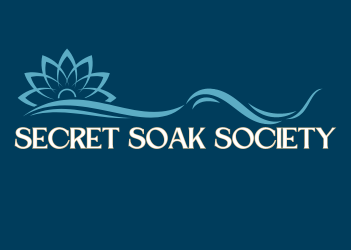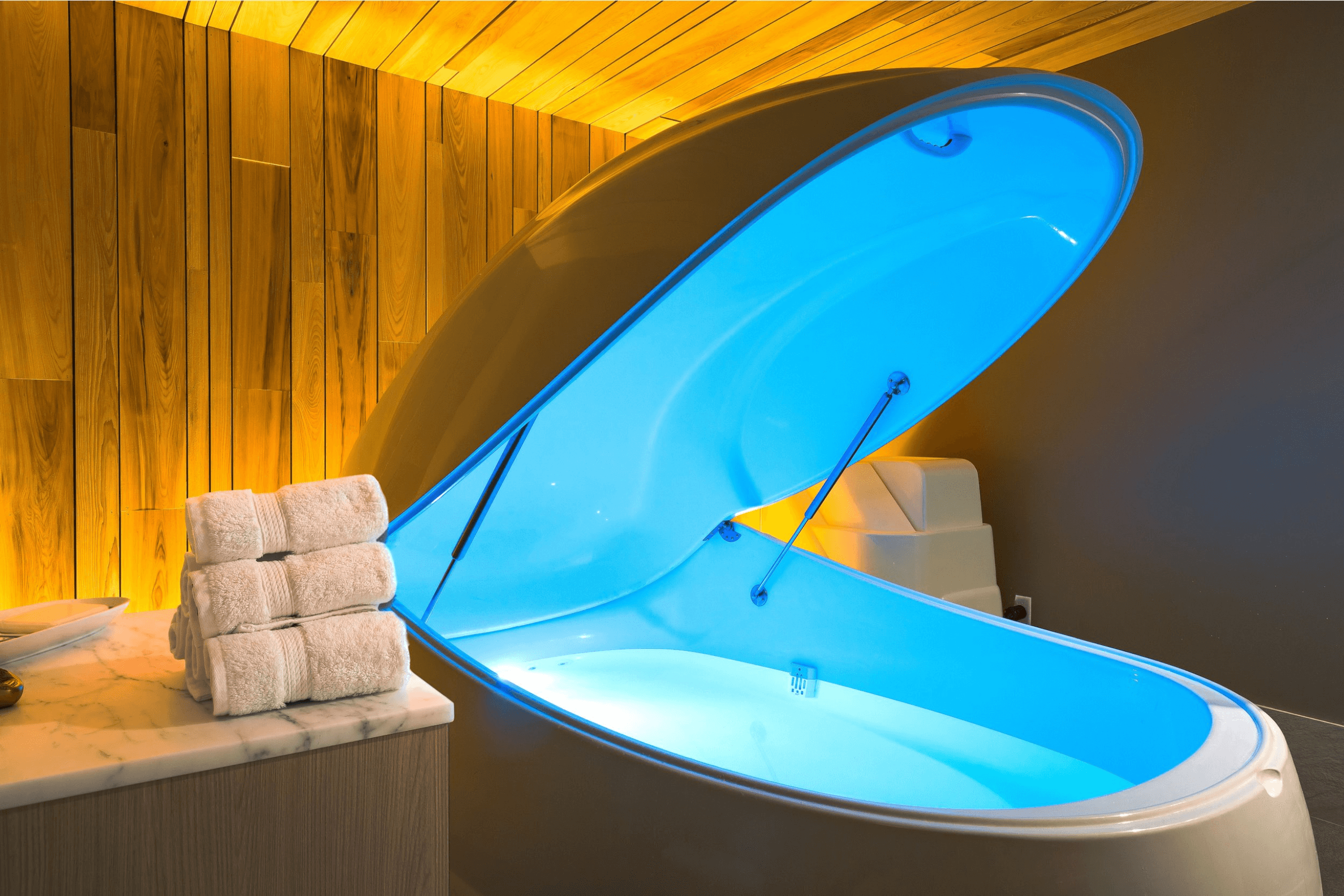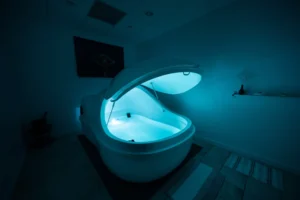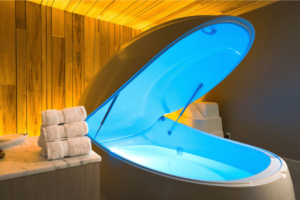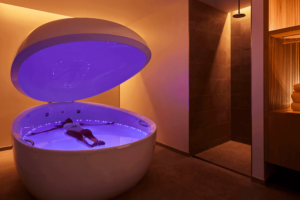Many people today are searching for ways to reduce stress, improve focus, and feel more balanced in their daily lives. Two practices that often come up in these conversations are float therapy and meditation. Both are powerful methods for calming the mind and helping the body recover, yet they are not exactly the same.
At first glance, they may seem similar since both involve stillness and relaxation, but the way they work and the experiences they provide are quite different. If you are a business professional, entrepreneur, or anyone in the United States looking for practical ways to handle stress, understanding the difference between float therapy and meditation can help you decide which approach fits your lifestyle best.
Float Therapy Explained
Float therapy takes place in a specially designed pod or sensory deprivation tank filled with warm water and a large amount of Epsom salt. The salt allows your body to float without any effort. Because the water is heated to the same temperature as your skin, you hardly notice where your body ends and the water begins.
During a float therapy session, there are no outside distractions. The pod is soundproof, the lights are dim or completely dark, and the environment is quiet. This unique setting allows your brain and body to rest in a way that is very different from normal relaxation.
The practice started in the 1950s as part of scientific research on how the brain reacts when sensory input is removed. Today, it has become popular in wellness centers across the United States because it helps people recover physically and mentally.
Meditation Explained
Meditation is an ancient practice that does not need equipment, tanks, or special rooms. It simply requires a quiet space where you can sit or lie down and focus your attention. The focus can be on your breathing, on repeating a calming word or phrase, or on simply observing your thoughts without reacting to them.
There are many forms of meditation. Some people practice mindfulness meditation, which is about paying attention to the present moment. Others practice loving-kindness meditation, which focuses on creating feelings of compassion. There is also transcendental meditation, which uses repeated sounds or mantras.
No matter the type, the purpose is the same: to bring calm, awareness, and better control of the mind. Many professionals use meditation every day to manage stress, sharpen focus, and stay balanced in their personal and work life.
Float Therapy vs Meditation
Even though float therapy and meditation aim for similar results, they differ in several important ways.
Float therapy depends on the environment of the pod. You are floating weightlessly in water, with sound and light removed. This environment does much of the work for you by limiting distractions and helping the body fully relax.
Meditation, on the other hand, can be done almost anywhere. It relies on your own ability to guide your focus and manage distractions. The more you practice, the easier it becomes, but it does take some training and consistency.
In short, float therapy removes external distractions through its setting, while meditation builds inner strength by teaching the mind to quiet itself.
Benefits of Float Therapy
The unique environment of float therapy creates several benefits for the body and mind. Many people report:
- Lower stress and reduced cortisol levels
- Faster recovery from workouts and muscle pain relief
- Better sleep quality after a float therapy session
- Increased creativity and problem-solving
- Pain relief due to the absence of physical pressure on the body
These results make it popular among athletes, busy professionals, and anyone looking for a deeper kind of relaxation.
Benefits of Meditation
Meditation has been studied for decades and is widely practiced around the world. Its benefits are equally impressive and include:
- Less anxiety and tension
- Better focus and memory
- Improved emotional stability
- Stronger ability to manage stress at work
- A greater sense of peace when practiced regularly
Because meditation can be practiced daily with no cost or equipment, it is one of the most accessible tools for mental well-being.
Float Therapy for Professionals
For business owners, managers, and corporate teams in the United States, float therapy offers a rare chance to fully disconnect. With phones, emails, and meetings constantly demanding attention, stepping into a pod provides complete silence and calm.
Many professionals say that after a float therapy session, they return to work with more clarity, sharper decision-making, and renewed focus. The weightless feeling also helps with physical recovery for people who spend long hours sitting at desks or standing during work.
Meditation for Professionals
Meditation also plays an important role in professional life. Since it requires no special setup, it can be done almost anywhere. A short session during a lunch break or even a few minutes before a meeting can make a big difference.
For small business owners, B2B professionals, and marketing managers, meditation offers a daily reset. It helps build patience, reduces stress, and strengthens the ability to stay calm under pressure.
Combining Float Therapy and Meditation
The good news is that you do not have to choose only one. Many people find that float therapy and meditation complement each other very well.
Some choose to practice meditation inside the float tank. Since distractions are already removed, focusing on breathing or repeating a calming phrase becomes easier. Others use meditation as a daily habit and add float sessions as a deeper form of relaxation when needed.
Using both practices together can create stronger results for stress management and overall wellness.
How to Start with Float Therapy
If you are new to float therapy, here are a few tips to make the most of your first experience:
- Avoid drinking coffee or other stimulants before your session.
- Arrive early so you can relax before getting into the pod.
- Trust the process, as it may take a session or two to fully adjust.
- Plan your float therapy session at a time when you do not have immediate tasks afterward.
How to Start with Meditation
Meditation may feel challenging at first, but with small steps, it becomes easier.
- Begin with just five minutes a day.
- Sit in a comfortable place with minimal distractions.
- Focus on your breath and gently bring your attention back if your mind wanders.
- Consider using guided meditation apps for support.
With consistent practice, meditation can become a natural part of your day.
Conclusion
Both float therapy and meditation offer powerful ways to manage stress, improve focus, and support well-being. Float therapy provides a unique environment that removes distractions and gives the body complete rest. Meditation strengthens the mind and can be done daily without cost. Together, they create a balanced approach to mental and physical wellness.
For those interested in professional support, Secret Soak Society is a trusted choice in the United States. They specialize in float therapy guidance, helping both beginners and regular floaters get the most out of each experience. With their expertise and care, every session is designed to be deeply relaxing and beneficial.
FAQs on Float Therapy and Meditation
Is float therapy the same as meditation?
No, they are different practices. Float therapy uses a sensory deprivation tank to create an environment free of distractions, while meditation trains the mind to quiet itself.
Can float therapy replace meditation?
It is not a replacement but can be a great complement. Many people practice both for stronger results.
How long does a float therapy session last?
Most sessions last between 60 and 90 minutes.
Do I need training for float therapy?
No training is required. Once inside the tank, the environment guides the process.
Which is more cost-friendly: float therapy or meditation?
Meditation is free, while float therapy sessions come at a cost depending on the wellness center. Some centers in the United States offer package deals to make it more affordable.
